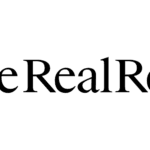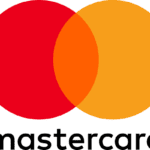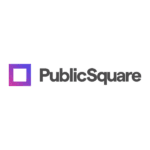Canada Goose Holdings Inc. (GOOS) Stock Analysis
Canada Goose Holdings Inc. (NYSE: GOOS) Stock Analysis
As of February 14, 2025
1. Company Overview
Canada Goose Holdings Inc. (GOOS) is a premium outdoor apparel manufacturer, globally recognized for its high-quality winter jackets, parkas, and accessories. Founded in 1957 and headquartered in Toronto, Canada, the company has built a strong brand presence through craftsmanship, heritage, and strategic marketing. In recent years, Canada Goose has expanded into new product categories (footwear, knitwear) and enhanced its direct-to-consumer (DTC) channels, aiming to reach a broader global audience while maintaining its luxury positioning.
Key Business Segments
1. Wholesale
o Sells products to premium department stores and specialty retailers worldwide.
o Historically the largest revenue contributor, though the mix has shifted as DTC channels expand.
2. Direct-to-Consumer (DTC)
o E-commerce: Official brand website offering the full product range and seasonal collections.
o Owned Retail Stores: Flagship and pop-up shops in key luxury markets (e.g., New York, London, Beijing).
o Provides higher margins and direct customer engagement, allowing for brand storytelling and curated experiences.
3. Licensing & Other
o Collaborations with designers or limited-edition partnerships.
o Accessories and emerging categories (footwear, lightweight jackets) supplement core winter outerwear.
Strategic Initiatives
- Geographic Expansion: Growing presence in Asia, Europe, and new North American regions.
- Product Diversification: Moving beyond heavy outerwear into spring/fall collections, footwear, and lifestyle apparel to reduce seasonality.
- Brand Elevation: Emphasis on luxury positioning, exclusive collaborations, and controlled distribution to protect brand equity.
- Sustainability & ESG: Increasing focus on responsible sourcing, reducing environmental impact, and adopting ethical materials.
2. Financial Performance
a. Revenue and Growth
- TTM Revenue (as of Dec 31, 2024): $917.09 Million
- YoY Revenue Growth (TTM): -19.86% (stock price 52-week change; actual revenue growth yoy is around +4–10% in quarterly breakdown)
Analysis
Canada Goose generated $917.09 million in sales over the last 12 months, reflecting moderate growth in certain quarters despite macroeconomic challenges. Recent expansions in DTC channels have supported top-line improvements, but overall growth is somewhat tempered by global economic conditions and changing consumer spending patterns.
b. Profitability
- Net Income (TTM): $50.44 Million
- EPS (TTM): $0.51
- Profit Margin (TTM): ~5.50%
- Return on Equity (ROE): 18.35%
- Return on Assets (ROA): 5.48%
Analysis
A net income of $50.44 million underscores the brand’s profitability. While a 5.50% profit margin is healthy for an apparel retailer, Canada Goose remains susceptible to margin fluctuations tied to seasonal demand and input costs. ROE of 18.35% highlights efficient use of equity, indicating decent returns for shareholders.
c. Margins
- Gross Margin (TTM): ~68.22%
- Operating Margin (TTM): 11.04%
- Profit Margin (TTM): 5.50%
Analysis
A gross margin exceeding 68% reflects the premium pricing and brand equity Canada Goose commands. The operating margin of 11.04% is strong for the apparel sector, aided by direct sales channels, though rising marketing and operating expenses can pressure margins if not managed carefully.
d. Cash Flow
- Operating Cash Flow (TTM): $164.78 Million
- Capital Expenditures (TTM): -$16.30 Million
- Free Cash Flow (TTM): $150.92 Million
- FCF Per Share (TTM): $3.30
Analysis
Robust free cash flow of $150.92 million supports ongoing store expansions, marketing campaigns, and potential share repurchases. Despite a seasonal business model, Canada Goose’s historically high margins and brand loyalty help maintain solid cash generation throughout the year.
3. Balance Sheet
- Total Assets: $1.72 Billion
- Total Liabilities: $1.22 Billion
- Shareholders’ Equity: $0.51 Billion
- Total Debt: $576.63 Million
- Cash & Equivalents: $197.88 Million
- Net Cash (Debt): -$378.76 Million
- Debt/Equity: 1.63
- Current Ratio: 2.01
- Quick Ratio: 1.02
Analysis
The company holds $197.88 million in cash against $576.63 million in total debt, resulting in net debt of -$378.76 million ($8.27 per share). While the debt-to-equity ratio of 1.63 is on the higher side for a luxury apparel brand, the strong brand margins and consistent free cash flow can service debt. A current ratio above 2.0 indicates good short-term liquidity, supporting inventory and operational needs.
4. Valuation
- Current Stock Price (as of Feb 14, 2025): $10.09
- Market Capitalization: $977.07 Million
- PE (TTM): 19.37
- Forward PE: 14.00
- EV/EBITDA (TTM): 10.27
- EV/FCF (TTM): 9.10
Analysis
The trailing PE of ~19.37 suggests a moderate valuation relative to earnings, while the forward PE near 14 indicates investor expectations of future earnings growth. EV/EBITDA at ~10.27 is fairly attractive for a luxury brand with strong margins, but potential macro headwinds and reliance on seasonal sales can create volatility.
5. Market Performance
- 52-Week Range: $9.23 – $14.75
- 52-Week Price Change: -19.86%
- Beta (5Y): 1.29
Analysis
Canada Goose shares have declined ~20% over the past year, reflecting challenges in discretionary consumer spending, ongoing macro uncertainties, and heightened competition in the luxury outerwear space. A beta of 1.29 indicates higher volatility compared to the market average, meaning share price movements can be more pronounced in both directions.
6. Financial Health and Risks
a. Liquidity & Leverage
- Current Ratio: 2.01
- Quick Ratio: 1.02
- Debt/Equity: 1.63
A healthy current ratio highlights strong short-term liquidity. However, a debt-to-equity ratio above 1.5 suggests reliance on leverage, requiring continued robust cash flow for comfortable debt servicing.
b. Profitability & Cash Flow
- Stable Margins: Gross margin near 68% and operating margin of 11% reflect the brand’s pricing power.
- Strong Free Cash Flow: $150.92 million in free cash flow supports brand investments, expansions, and share buybacks.
c. Operational & Market Risks
- Seasonality: Heavily reliant on winter outerwear sales; slower demand in off-peak seasons can strain cash flow.
- Brand Perception: As a luxury brand, consumer sentiment shifts or negative publicity can impact demand significantly.
- Competitive Pressures: Premium outerwear market includes rivals with broader product lines and established global footprints.
d. Regulatory & External Risks
- Economic Cycles: Discretionary spending on luxury goods can contract during economic downturns.
- Global Expansion: Potential exposure to foreign exchange fluctuations, trade policies, and operational complexities in new markets.
7. Conclusion
Pros
1. High Margins: Gross margin of ~68% and operating margin of 11% underscore strong brand power and pricing.
2. Solid Cash Generation: Free cash flow of $150.92 million, supporting expansions and buybacks.
3. Premium Brand Equity: Global recognition in the luxury outerwear segment, with opportunities to diversify into lifestyle products.
4. Strong Liquidity: Current ratio of 2.01 indicates solid short-term financial flexibility.
Cons
1. High Leverage: Debt/Equity of 1.63 requires careful cash flow management for debt servicing.
2. Seasonality: Heavy reliance on winter sales can lead to uneven quarterly performance.
3. Declining Stock Price: Shares have fallen ~20% over the last year, indicating market concerns about discretionary spending and growth prospects.
4. Exposure to Macro Risks: Fluctuations in consumer sentiment, economic conditions, and global retail trends can significantly impact demand.
Final Note
Canada Goose’s premium brand position, historical profitability, and robust free cash flow make it an attractive option for investors seeking exposure to the luxury apparel segment. Nonetheless, the company must navigate seasonal revenue patterns, elevated leverage, and macroeconomic uncertainties. Future growth may hinge on successful expansion beyond winter outerwear, effective inventory management, and sustained brand equity in global markets.
Disclaimer: This analysis is for informational purposes only and does not constitute investment advice. Investing involves risks, including the loss of principal. Past performance is not indicative of future results. Consult a qualified financial advisor before making any investment decisions.






